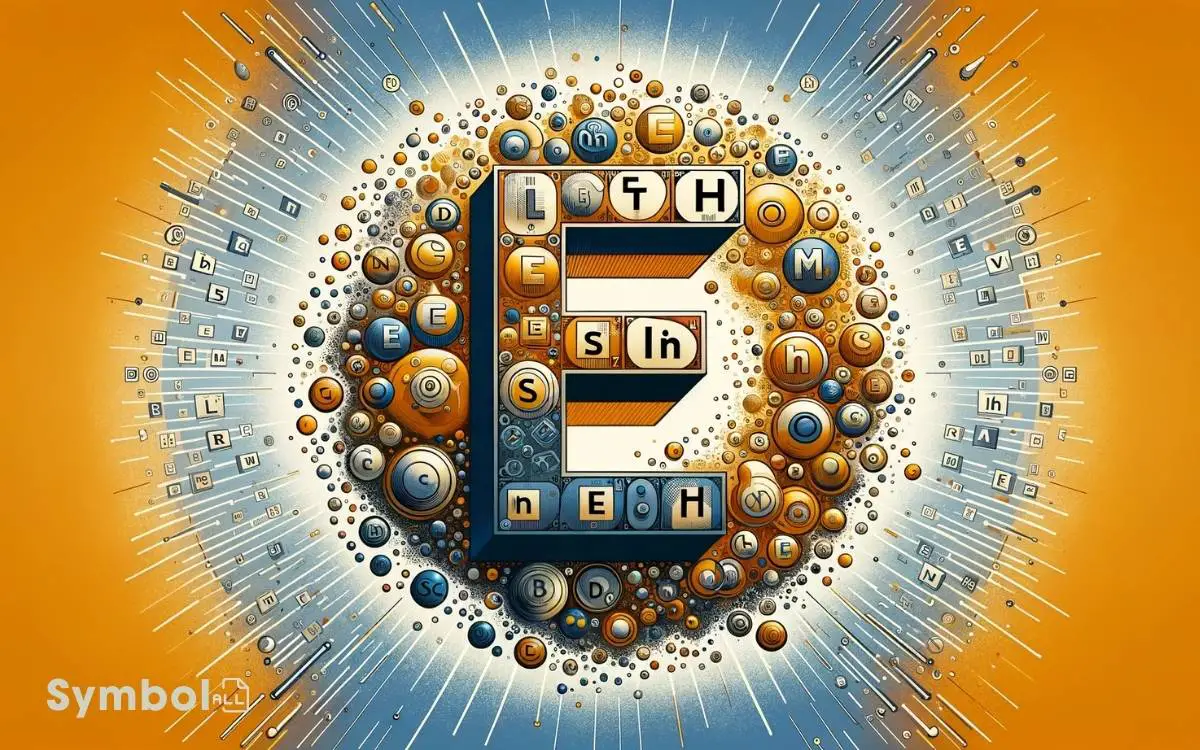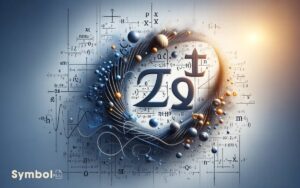Name a Letter Never Used in Any Element Symbol: It’s ‘J’!
You’re looking for a letter that’s never used in any element symbol. The answer is ‘J’. This exclusion isn’t random. It’s a result of stringent selection criteria aimed at ensuring clarity within scientific communication.
Since element symbols often derive from Latin, where ‘J’ was historically absent, its exclusion persists in modern scientific nomenclature. This has practical implications, narrowing the lexicon for scientists and enforcing a unique constraint in element naming.
Understanding why ‘J’ is excluded offers insight into the evolution of scientific nomenclature and highlights the intersection of language, culture, and science in shaping our understanding of the elements. Unpacking these historical and linguistic considerations reveals a broader context.

Key Takeaways
The Alphabet of Elements
The periodic table’s elements are represented by unique symbols that draw from a distinct subset of the alphabet, each meticulously chosen to reflect the element’s identity.
These symbols serve as a universal shorthand, enabling scientists worldwide to explore with precision and efficiency.
The selection criteria for these symbols are stringent, requiring that they not only represent the element’s name but also avoid confusion with other symbols. This guarantees clarity in scientific discourse.
As you investigate the intricate world of elemental symbols, you’ll notice that the alphabet serves not just as a foundation for language, but as an essential tool in the categorization and understanding of the natural world.
Each symbol encapsulates a wealth of information, from atomic structure to chemical properties, highlighting the alphabet’s role in the systematic study of elements.
Unveiling the Excluded Letter
You must understand that the periodic table‘s design inherently excludes a specific letter from element symbols due to historical, linguistic, and practical considerations.
This exclusion profoundly influences how new elements are named and represented symbolically.
Analyzing this phenomenon reveals the nuanced interplay between scientific nomenclature and the constraints of language.
Symbolic Exclusion Explained
Delving into the periodic table, it’s clear that the letter ‘J’ remains conspicuously absent from any element symbols, a unique exclusion rooted in historical and linguistic rationales.
This omission isn’t arbitrary but reflects the evolution of scientific nomenclature and the influence of languages mainly used in early chemical discoveries.
Historically, Latin played a pivotal role in the naming conventions of elements, and the letter ‘J’ doesn’t exist in traditional Latin alphabets.
Consequently, as elements were discovered and named, the adherence to Latin-inspired symbols became a norm, perpetuating the absence of ‘J’ in element symbols.
This adherence guarantees consistency and avoids confusion, facilitating a universal understanding among scientists worldwide, irrespective of their native language or dialect.
Impact on Element Naming
While the exclusion of the letter ‘J’ from element symbols stems from historical and linguistic traditions, it greatly shapes the process of naming new elements.
You’ll find that this peculiarity narrows the lexicon for scientists, enforcing a unique constraint within the periodic table’s nomenclature.
This limitation isn’t merely trivial; it reflects a deep-seated adherence to tradition within the scientific community, impacting how elements are identified and categorized.
As new elements are discovered, the avoidance of ‘J’ demands creativity, ensuring names are both distinct and conform to established conventions.
This adherence promotes uniformity across languages and scientific discourse, facilitating global communication.
Consequently, the absence of ‘J’ in element symbols isn’t an oversight but a deliberate choice that underscores the meticulous and considered approach to naming elements, reinforcing consistency and clarity in scientific communication.
Historical Overview of Element Symbols
The development of element symbols throughout history reflects a fascinating journey from alchemical symbols to the standardized system we recognize today.
Initially, alchemists employed a complex array of symbols derived from planetary associations and mystical philosophies to represent substances.
These symbols, while rich in cultural and philosophical significance, lacked the clarity and universality necessary for scientific discourse.
As chemistry evolved from alchemy to a rigorous science, the need for a standardized, universally understandable system became apparent.
In the late 18th century, Antoine Lavoisier’s work in identifying elements as basic substances that couldn’t be broken down further played a pivotal role.
This shift led to the adoption of a system where element symbols are derived from their Latin names, ensuring consistency and facilitating global scientific communication.
Criteria for Symbol Selection
Selecting symbols for elements involves a thorough process that hinges on both historical precedent and practical considerations, guaranteeing clear communication across the scientific community.
When you’re involved in this selection, you need to take into account several critical criteria to uphold these standards.
These include:
- Universality: The symbol must be identifiable and applicable worldwide, transcending language barriers.
- Uniqueness: Each symbol must distinctly identify an element, avoiding any confusion with others.
- Historical Relevance: Often, symbols are derived from Latin or Greek names of elements, honoring their historical discovery or properties.
These criteria ensure that element symbols serve their purpose effectively, facilitating seamless discourse in the scientific domain. You’ll find that adherence to these principles is key in maintaining the integrity and utility of the periodic table.
The Significance of Chemical Symbols
Understanding chemical symbols is essential, as they serve as the universal shorthand in scientific communication, enabling researchers to swiftly identify and discuss elements without ambiguity.
These symbols, often one or two letters, aren’t arbitrary; they’re derived from an element’s Latin or English name, providing a concise way to convey complex information.
This standardized method guarantees that, regardless of language or region, a chemical symbol communicates the same information to all scientists.
It’s a foundational aspect of chemical literacy, allowing you to grasp the composition of compounds and the interactions within chemical reactions.
Proficiency in these symbols opens up the ability to read and interpret the language of chemistry, facilitating your engagement with a vast array of scientific literature and discussions.
Global Standards in Nomenclature
Building on your knowledge of chemical symbols, it’s essential to explore how global standards in nomenclature guarantee uniformity across scientific disciplines.
These standards aren’t arbitrary; they’re meticulously crafted to make sure that each element’s name and symbol are universally recognized, regardless of language or location.
- Consistency: Ensures that every chemical symbol is unique and consistently used in scientific literature worldwide.
- Clarity: Aids in preventing confusion by adhering to a clear set of rules for naming new elements, thereby facilitating communication among scientists.
- Collaboration: Fosters international collaboration by providing a common language that transcends national boundaries, enabling scientists to work together more effectively.
Understanding these standards is vital for anyone involved in the scientific community, as they’re the foundation of clear and precise scientific communication.
Exploring the Periodic Table
As you explore the periodic table, you’ll notice that each element’s symbol offers a unique insight into its identity, reflecting a blend of historical and linguistic influences.
Understanding these symbols requires a grasp of the alphabet’s role in chemistry, where each letter is selected to convey specific information about the element.
This examination reveals patterns and exceptions that are essential for anyone studying the field to comprehend.
Understanding Element Symbols
Diving into the periodic table, you’ll find each element represented by a unique symbol, an essential key to decoding chemical language. These symbols serve as a universal shorthand, enabling scientists worldwide to communicate complex information succinctly. Diving into the periodic table, you’ll find each element represented by a unique symbol, an essential key to decoding chemical language. These symbols serve as a universal shorthand, enabling scientists worldwide to communicate complex information succinctly. By combining these elemental symbols, chemists create formulas that provide a precise chemical representation of compounds. This system not only standardizes communication but also allows for a deeper understanding of the composition and interactions of substances across various fields of science.
- Atomic Number: This is the number of protons in an atom’s nucleus, fundamentally defining the element and its position on the periodic table.
- Element Name: Each symbol originates from an element’s English or Latin name, facilitating a standardized identification system.
- Chemical Properties: Symbols encapsulate elements’ identities, hinting at their chemical behaviors and relationships with other elements.
Understanding these symbols requires recognizing their role as not just identifiers but as gateways to exploring the elements’ intrinsic properties and interactions. This knowledge is pivotal for anyone delving into the domains of chemistry and material science.
Unique Symbol Characteristics
Exploring the periodic table reveals that each element’s symbol possesses unique characteristics, directly reflecting its atomic structure and chemical properties.
These symbols aren’t arbitrary but are meticulously chosen to communicate essential information about the element at a glance.
For instance, the first letter is always capitalized, indicating the symbol’s start and ensuring its standout presence in chemical formulas.
When a second letter is included, it’s always lowercase, differentiating it from a new symbol. This convention prevents confusion in dense chemical equations.
Additionally, the choice of letters often nods to an element’s historical name or its name in another language, embedding a layer of scientific heritage.
These conventions maintain clarity, facilitate international communication among scientists, and underscore the periodic table’s role as a universal language in chemistry.
Alphabet in Chemistry
When examining the periodic table, you’ll notice that the alphabet plays a significant role in the formulation of element symbols, each meticulously crafted to provide essential information about its corresponding substance.
The selection of letters for element symbols isn’t arbitrary; it’s a reflection of a deep-seated scientific rationale.
- Uniqueness: Every symbol is unique, often derived from a Latin or Greek name, ensuring no confusion in scientific discourse.
- Standardization: The IUPAC guarantees global consistency, crucial for international collaboration and research.
- Informative: Symbols convey essential attributes, such as atomic number and, indirectly, electron configuration.
Understanding the alphabet in chemistry isn’t just about memorization; it’s about appreciating the logic and history embedded in the periodic table. This approach enhances your grasp of elemental properties and their scientific significance.
The Evolution of Chemical Elements
The evolution of chemical elements traces a complex journey from the birth of the universe to the diverse periodic table we study today.
Initially, the universe contained primarily hydrogen and helium, formed from the Big Bang’s primordial nucleosynthesis.
As stars formed and evolved, they became the crucibles for nuclear fusion, creating heavier elements through processes like stellar nucleosynthesis and supernova nucleosynthesis. This progression introduced elements up to iron in the periodic table.
Elements heavier than iron required even more extreme conditions, found in supernovae and neutron star collisions, facilitating rapid neutron capture processes.
These cosmological events enriched the interstellar medium with a plethora of elements, leading to the formation of planets and life as we understand it.
Understanding this evolutionary process informs your grasp of the periodic table’s intricate design and its elements’ cosmic origins.
Symbol Anomalies and Exceptions
Delving into the domain of chemical symbols reveals unique anomalies and exceptions that defy standard naming conventions.
You’ll find that while most symbols derive straightforwardly from their English or Latin names, several stand out due to historical, linguistic, or cultural influences.
These anomalies provide a deeper understanding of the periodic table’s complexity and the evolution of chemical nomenclature.
- J is absent: No element symbol incorporates the letter ‘J’, reflecting its late adoption in many European languages.
- W for Tungsten: Deriving from the German word ‘Wolfram’, Tungsten’s symbol ‘W’ bucks the trend of using English or Latin names.
- Pb for Lead: Stemming from the Latin ‘Plumbum’, Pb highlights the influence of ancient naming practices on modern symbols.
These examples underscore the intricate relationship between chemistry, language, and history, challenging the notion of a one-size-fits-all approach to naming.
The Role of IUPAC in Naming
Understanding the anomalies and exceptions in chemical symbols naturally leads to examining how the International Union of Pure and Applied Chemistry (IUPAC) plays a pivotal role in the standardized naming of elements.
IUPAC guarantees that each element’s name and symbol are universally recognized, fostering clear communication among scientists worldwide.
This organization meticulously selects symbols to avoid duplication and confusion, following a systematic approach that incorporates atomic number and properties into the decision-making process.
By implementing a rigorous review procedure, IUPAC permits for the integration of new elements into the periodic table seamlessly.
Your grasp of element symbols isn’t just about memorization; it’s about understanding the structured and methodical approach behind their assignment, ensuring that each symbol carries a globally acknowledged meaning and context within the scientific community.
Cultural and Linguistic Influences
Cultural and linguistic factors greatly shape the assignment of chemical element symbols, reflecting a rich tapestry of global influences.
You’ll find that the periodic table isn’t just a collection of scientific notations but also a mirror of linguistic diversity and historical recognition.
- Historical homage: Symbols often pay tribute to ancient names or discoverers, intertwining history with science.
- Linguistic diversity: The choice of symbols incorporates a variety of languages, not just Latin or Greek, showcasing global contributions.
- Cultural acknowledgment: Some symbols reflect the cultural heritage or geographical discovery sites, emphasizing the international nature of scientific discovery.
Understanding these influences helps you appreciate the complexity and thoughtfulness behind element naming, revealing a fascinating intersection between culture, language, and science.
The Future of Elemental Naming
You must consider how trends in discovering new elements could reshape naming conventions, emphasizing a technical evolution.
Analyzing the impact of cultural influences on naming reveals a shift towards more inclusive and diverse representations.
Hence, you’ll observe an intricate blend of tradition and innovation in the future of elemental naming.
New Elements Discovery Trends
As scientists push the boundaries of chemistry, the shifts in discovering new elements and naming them reflect evolving scientific priorities and international collaboration.
The search for new elements has moved from accidental discovery to intentional synthesis in high-energy physics laboratories.
Key trends include:
- Evolution: Efforts are increasingly focused on creating elements that fill predicted spots on the periodic table.
- Cooperative research: Teams across continents pool resources and expertise, highlighting the global nature of modern scientific inquiry.
- Cutting-edge detection methods: The use of sophisticated equipment allows for the identification of elements that exist for only fractions of a second.
These trends not only mark the progression of scientific techniques but also pave the way for future discoveries that deepen our understanding of the atomic world.
Naming Convention Evolution
Building on the innovative strides in discovering new elements, the evolution of naming conventions signifies a pivotal aspect of scientific advancement in the field of chemistry.
As you explore further, you’ll notice a meticulous approach toward adopting names that reflect not just the element’s properties but also its discoverers’ contributions and historical significance.
| Era | Focus |
|---|---|
| 19th Century | Origin & Discovery |
| Early 20th Century | Physical Properties |
| Late 20th Century | Discoverers & Locations |
| 21st Century & Beyond | Global Heritage & Uniqueness |
This table illustrates the shift from elemental characteristics to a broader, more inclusive perspective, highlighting the ongoing effort to make sure that new nomenclatures honor the collective scientific heritage.
The precision in naming reflects a deeper understanding and respect for the multifaceted nature of elements, embracing a future where every name tells a story, fostering a greater connection between science and society.
Cultural Influences on Naming
Cultural influences play a pivotal role in shaping the future of elemental naming, reflecting a shift towards global inclusivity and recognition. As you explore further, you’ll notice a trend towards recognizing diverse contributions to science.
This evolution underscores the importance of:
- Diverse linguistic representation: Incorporating elements from various languages, not just those traditionally dominant in the scientific community.
- Acknowledgment of global scientific contributions: Naming elements after scientists from a wide range of cultures and countries.
- Incorporation of indigenous names: Drawing inspiration from local and indigenous terminology for new elements.
This approach not only enriches the periodic table but also fosters a sense of belonging and pride among global communities. It’s a proof of science’s universal nature, transcending cultural and linguistic barriers.
Educational Implications
Understanding the absence of certain letters in element symbols offers unique insights into the periodic table‘s linguistic and scientific structure, profoundly impacting educational strategies in chemistry.
You’ll find that this peculiarity prompts a deeper exploration of the historical and etymological origins of element names, fostering a multidisciplinary approach in teaching.
It encourages students to contemplate not just the chemical properties of elements but also the linguistic and cultural factors influencing scientific nomenclature.
This awareness aids in developing a holistic understanding of science, bridging gaps between seemingly disparate academic disciplines.
Moreover, it sharpens analytical skills, as students learn to observe and question the conventions within scientific language, enhancing their ability to engage with scientific literature critically.
Such an approach not only enriches their knowledge base but also cultivates a more nuanced appreciation of the scientific endeavour.
Unanswered Questions in Chemistry
You’re now facing the enigmatic frontier of chemistry, where the chemical composition of dark matter, the limitations of the periodic table, and the current status of cold fusion pose profound questions.
These topics challenge our understanding of the universe, pushing you to re-evaluate the fundamental principles that have guided scientific inquiry to date.
Your exploration into these areas will demand a rigorous examination of existing theories and the development of innovative approaches to unravel these complex mysteries.
Dark Matters Chemical Composition
Despite extensive research, the chemical composition of dark matter remains one of the most elusive puzzles in modern chemistry.
You’re delving into a domain where traditional chemical analysis falls short, primarily because dark matter doesn’t interact with electromagnetic forces in a way that allows for direct detection or chemical characterization.
The mystery compounds the challenge of understanding the universe’s fundamental structure.
- Non-Baryonic Nature: Dark matter is believed to consist of particles that aren’t part of the standard atomic model, complicating its identification through chemical means.
- Weak Interaction with Ordinary Matter: Its rare interactions make detecting and analyzing dark matter through conventional chemical methods nearly impossible.
- Hypothetical Particles: Theories suggest exotic particles, such as WIMPs or axions, could comprise dark matter, yet their chemical properties remain speculative.
These aspects underscore the technical intricacies and the ongoing quest for clarity within the scientific community.
Limitations of Periodic Table
Often, the Periodic Table, while foundational to chemistry, reveals its limitations when probing the frontier questions in the field.
You’ll find that while it elegantly classifies known elements, it’s less adept at predicting the properties of hypothetical elements beyond the current end, oganesson.
Additionally, the table doesn’t account for the nuances of isotopes and their varying stabilities, a pivotal aspect when delving into nuclear chemistry and applications.
Its static nature struggles with the dynamic behaviors of electrons in quantum states, leaving gaps in our understanding of chemical reactivity and bonding.
These limitations underscore the need for advanced models and theories to bridge the gaps, ensuring your grasp of chemistry evolves alongside the expanding boundaries of scientific discovery.
Cold Fusions Current Status
Currently, the status of cold fusion remains one of the most contentious and unresolved areas in modern chemistry. You’re exploring a field where the promise of a revolutionary energy source collides with significant experimental challenges and skepticism.
- Reproducibility Issues: Many attempts to replicate initial cold fusion experiments have failed, casting doubt on the phenomenon’s validity.
- Theoretical Challenges: The lack of a widely accepted theoretical framework that explains how cold fusion could occur at room temperatures complicates its study.
- Funding and Recognition: The controversial nature of cold fusion research has led to difficulties in securing funding and institutional support, further hindering progress.
Despite these obstacles, a dedicated community of researchers persists, driven by the potential implications for energy production. Your understanding of this complex issue is vital for navigating the ongoing debate.
Conclusion
In wrapping up, it’s essential to recognize that the letter ‘J’ remains the lone wolf in the chemical alphabet, eluding inclusion in element symbols.
This exclusion isn’t merely a whimsical choice but a reflection of the intricate dance between tradition, scientific precision, and international consensus.
As the periodic table continues to evolve, this linguistic quirk underscores the dynamic nature of scientific discovery and nomenclature. The absence of ‘J’ is a small, yet telling, confirmation of the complexities underlying the seemingly straightforward periodic table.






